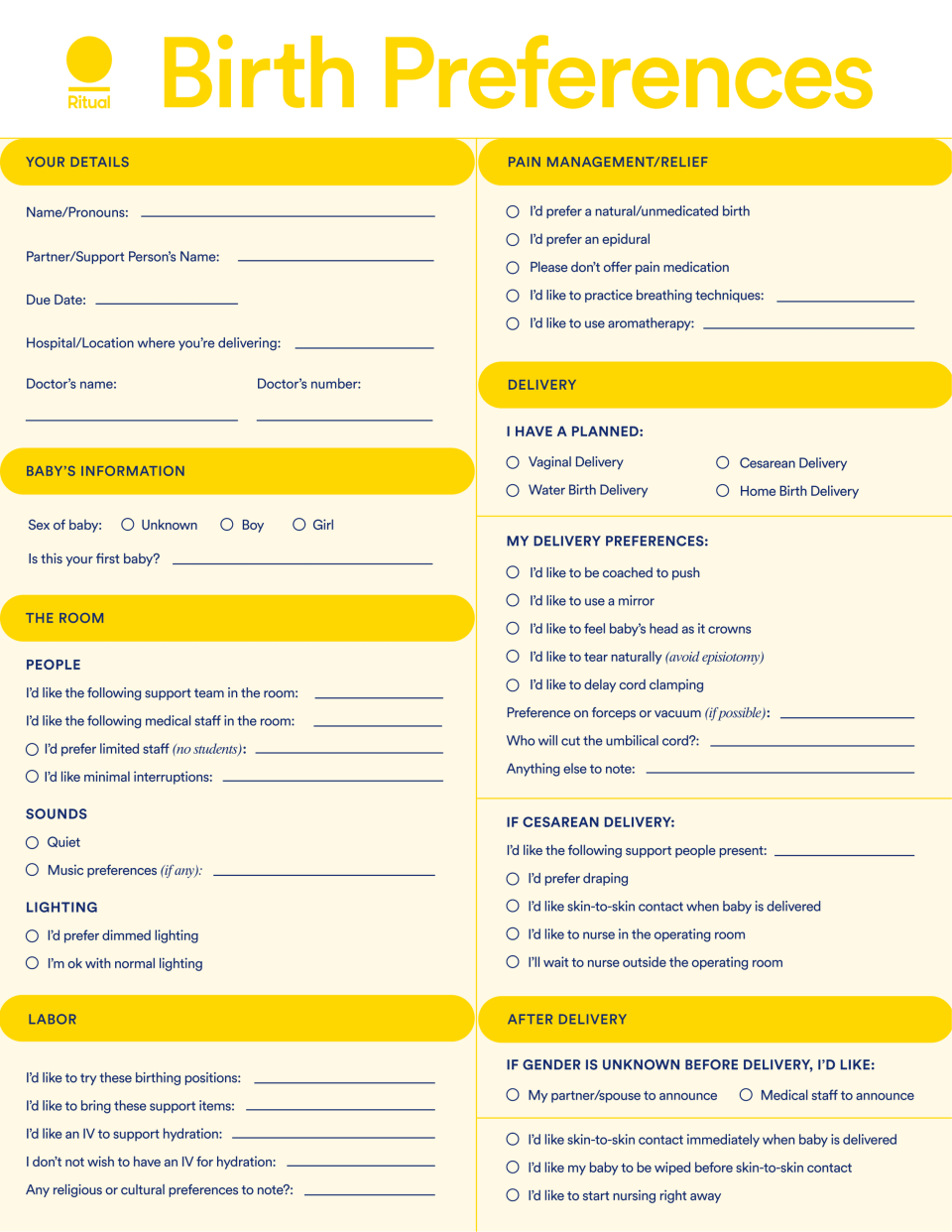Essential Takeaways
• Birth plans, documents that outline birthing people’s preferences for their birth experiences, give you the opportunity to take a little more control during the birth process.
• We spoke with Dr. Navya Mysore MDCM, CCFP for recommendations to create a birth plan that’s validated and respected as much as possible by your care team.
No matter who you are or what your health history is, you deserve the opportunity to take some control over your birthing experience. That’s where birth plans — sometimes called birth preferences — come in.
Birth plans are something that all birthing people should have the ability to create, and all compassionate, patient-centered healthcare providers should support. Whether you’re using an existing template, creating one from scratch, or just jotting down priorities, we’re here to help you make empowered decisions, every step of the way.
What Is a Birth Plan?
Birth plans are documents that outline a pregnant woman’s preferences for birth. (1) Although birth experiences are largely outside of any individual’s control, creating a plan is an exercise in proactively preparing for scenarios and identifying the best options if they arise.
Birth plans can include preferences for:
• Birth location: This could be at home, a birth center, or the hospital.
• Support persons: Such as your partner, family, children, or doula.
• Birth attendants: This can include a physician, midwife, or nursing staff.
• Birth environment: How’s the lighting? Are you blasting Rihanna, or crying it out to Phoebe Bridgers? How about aromatherapy?
• Labor: This could include things like birthing positions, support items, religious or cultural preferences.
• Labor management: Such as preference between spontaneous and induced labor.
• Fetal well-being assessment: E.g., intermittent or continuous monitoring.
• Pain relief: Is your preference au natural and unmedicated? Medicated? Non-pharmacological pain relief? Your pain, your call.
• Delivery: This could include position, involvement and location of support people, natural tearing versus episiotomy, delayed cord clamping, use of vacuum or forceps, who is going to cut the umbilical cord, and more.
• Cesarean delivery: Which support people do you want present? What are the anesthesia options? How about draping, skin-to-skin contact and nursing in the operating room?
• Newborn care: Skin-to-skin contact or dry infant first? Do you want to start nursing at once? How about timing of routine procedures, and cord blood banking? How long do you want to plan to stay in the hospital?











